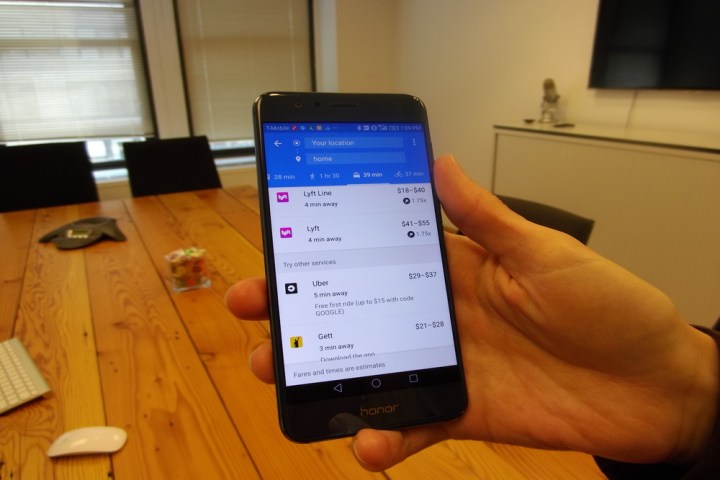
The problem is, other apps have traditionally been left out: eschewing Uber for Juno, Fare, or Fasten required hopping out of Maps for a spell. But that’s finally changing, at least for some services. On Thursday, Google announced the addition of Lyft and Gett to the ride-hailing tab in Maps.
Maps’ ridesharing tab was added earlier this year, in March, and it’s relatively straightforward. Navigate to a place — the Empire State Building, say, or the Golden Gate Bridge — and alongside turn-by-turn walking, biking, driving, and public transit directions, you’ll see a ridesharing tab. It shows a comparison of services broken down by the tiers each offers — for example, estimated fares for both UberX, Uber’s low-cost option, and UberXL and UberBLACK, its luxury alternatives. And you’ll see estimates for the amount of time you’ll have to spend stuck in traffic.
Starting today, Lyft and Gett’s myriad of ridesharing options will join Uber’s in Maps. Install Gett and Lyft on your phone and, depending on your geographic location, shortcuts for Lyft, Lyft Line, and Lyft Plus will begin appearing alongside the familiar Uber tiers. Google said the integrations will roll out in the iOS and Android Maps app over the coming weeks.
Lyft and Gett aren’t the first non-Uber ridesharing apps to join Maps. Earlier this year, the search giant added 99Taxis in Brazil, Ola Cabs in India, Hailo and Gett in the U.K., and Mytaxi in Germany and Spain. Today’s additions bring the total to nine across 60 countries.
These changes come hot on the heels of Maps improvements major and minor. Google introduced Lists in August, a feature which lets you organize places you’ve visited by collection (“Favorites,” “Want to go,” and “Share place”), and evidence in beta releases of Google Maps point to more significant enhancements coming. Maps might gain speed limits in driving directions, for one, plus improved integration with food delivery services like Gruhub, Eat24, and Delivery.com. And in the coming months, an (as-yet unfinished) feature might alert you of nearby available parking.

